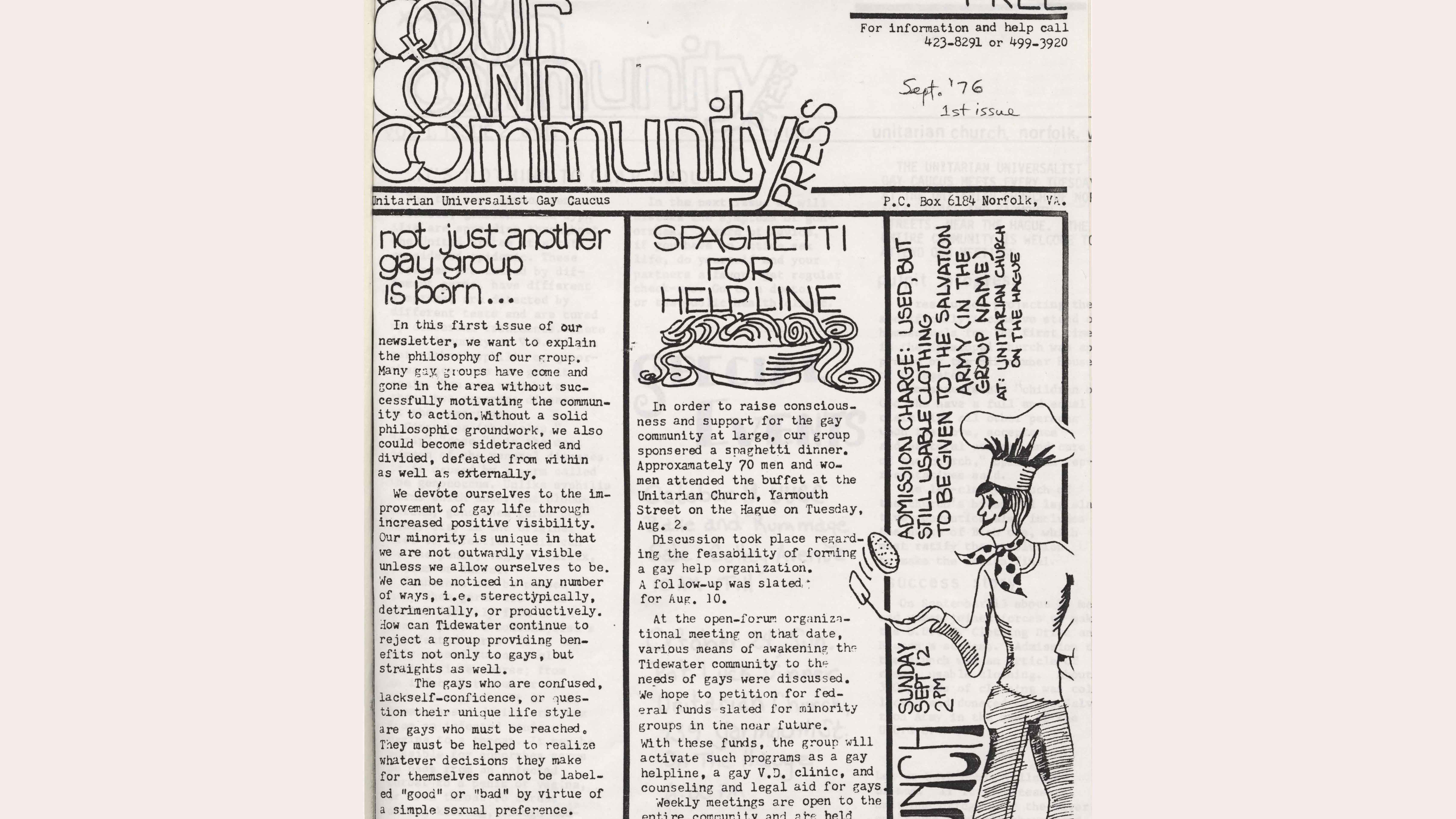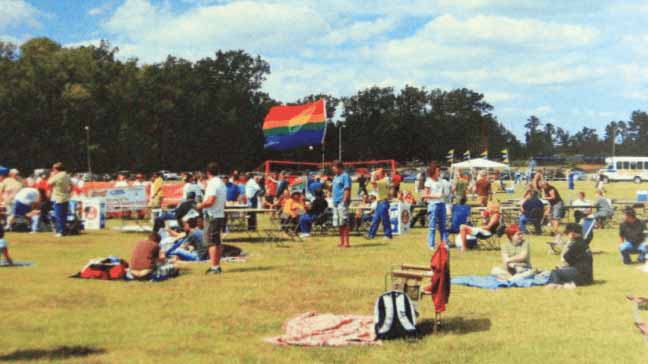This is the first part in a multi-part series about queer history in Hampton Roads.

WHRO engineer Jordan Christie assisted with this audio report.
Gay Pride was born in June 1969 after nights of riots in Greenwich Village following a raid at the now-historic Stonewall Inn.
Now, Pride is a month-long celebration of queer identities that includes government proclamations, festivals and parades.
The journey to today's greater awareness wasn't easy, and there were countless individuals who fought hard for acceptance.
The local LBGTQ community began to emerge in the 1970s. Among the community was a number of gay veterans.
Bill said being in the military and working a civil service job in the 1950s and ’60s was perilous as a gay man.
He asked that we not use his last name. He is using a pseudonym because he wasn’t outwardly gay at the time he worked those jobs.
“I learned early on that I had to be extremely careful who I talked to, what I did, where I went. I had to kind of look over my shoulder,” he said.
“I hated to do this … I did not want to endanger myself or other people.”
Regardless of being qualified and doing a job well, being gay was cause for being dismissed from the military and a stigma that would follow you for life.
“You probably got a bad conduct discharge called the BCD and that would haunt you for the rest of your life,” he said. “Many people who were thrown out of the military, either during the war or afterwards, were probably darn good soldiers and sailors.”

The first issue of "Our Own" advertised a community spaghetti dinner.
By the mid 1970s, the gay community in Hampton Roads began to organize.
Joe Amos had recently relocated to the area and said a sense of kinship and identity was growing.
“By (1977), in this area, I think a lot of gay men had moved here, or maybe they had been in the military and they just stayed here,” Amos said. “I'm not sure that we always understood that we were cutting edge, that we were plowing a new frontier, we were changing things.”
In 1976, a handful of gays and lesbians created a social and political group at the Unitarian Universalist Church in Norfolk.
Fred Osgood was one of the founding members.
“We had conferences there that were attended by people up and down the East Coast,” he said. “We invited the head of the National Gay Task Force, a number of people that would come from all over to talk.”
The group eventually needed a newsletter to keep members informed of activities.
Within a few years, that newsletter grew in size and circulation, eventually becoming the “Our Own” newspaper.
It was so widely read, it was the de facto queer newspaper for the entire state.
“It was really quite a crown jewel,” Osgood said.
“It provided an outlet for a lot of people who had some motivation to socialize and to associate with other gay people in a non-bar environment.”
“Our Own” declared bankruptcy in 1998.
At the time, it was one of the country's oldest gay and lesbian newspapers.

